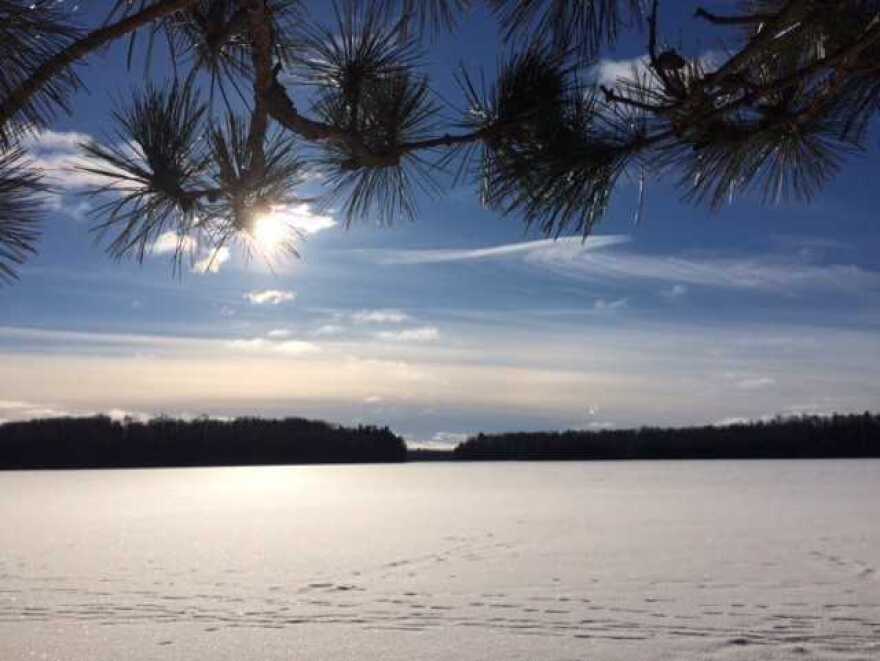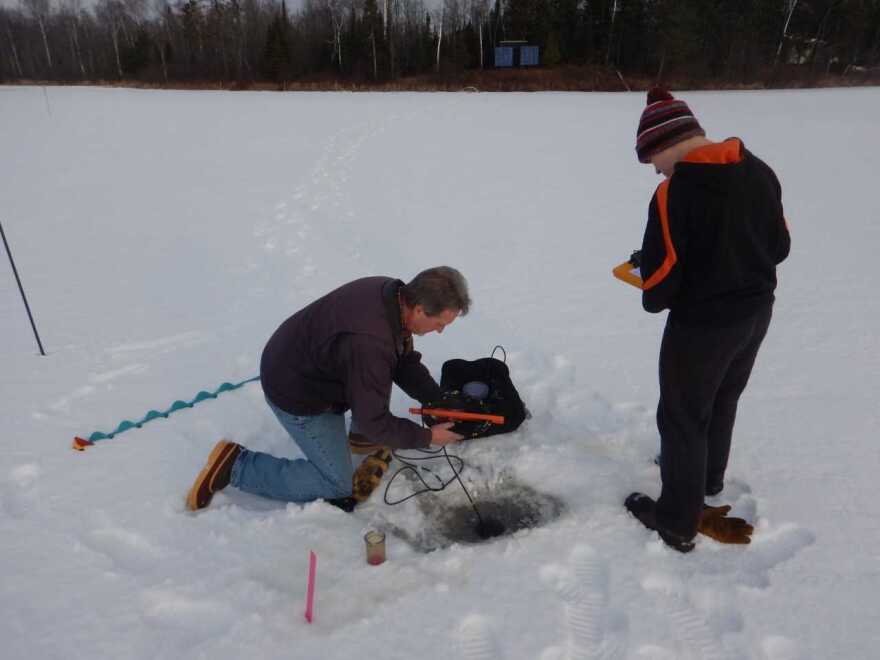Loads of snow in northern Wisconsin has been great for cross-country skiers and snowmobile enthusiasts, but what about for fish? Thick ice coupled with deep snow cover can drive down oxygen levels in lakes.
Mike Vogelsang is based in the heart of the snowy winter scene. He’s North District Fisheries Supervisor with the Wisconsin Department of Natural Resources.
“The good news with this winter is all that the heavy snow came late and prior to that we had very little snow cover on the ice and that helped plants and water generate oxygen – so even with the heavy snow we’ve seen recently, I don’t expect we’re going to have oxygen issues on most of our waters,” Vogelsang says.
That doesn’t mean fish in every lake — large or small, deep or shallow – will see spring arrive.
Vogelsang says bass and bluegill are most susceptible to low oxygen conditions, and he adds, some lakes are naturally prone to die-off.
“The usual suspect lakes are usually smaller in size — less than 500 acres and 15 feet deep or less. And typically they’re swampy — with real dark water. If you have those traits, typically you can expect to see some partial winter kill,” he says.

Vogelsang understands that for some people the term “winter kill” might be unsavory, “Because they maybe envision that the whole lake is going to die and all the fish are going to suffocate,” the fisheries supervisor says.
Losing some fish to inhospitable winter weather, according to Vogelsang is simply nature’s way of “thinning out the herd.”
“We never ever see a total kill in these waters. It’s just enough to thin that population out and typically we don’t do much management action in those because the fish remaining will repopulate themselves,” he says.
The surviving fish have more room to thrive and grow, “And for the following three or four years after a partial kill you can have some really, really good fishing because those fish typically grow in size at a very quick rate,” Vogelsang says.
But don’t let his bravado fool you. Vogelsang takes the health of the lakes he stewards, and the fish in them, very seriously.
Four teams monitor waters in his district, which spans roughly the northern quarter of the state. Each fish team includes a biologist, technician and summer interns.
“They’re responsible for going out and surveying the waters on their turf, so to speak,” Vogelsang says. “We’re going to be watching this from east to west and north to south and we have a couple dozen lakes that typically have a partial kill just about every year. We typically go out and do some dissolved oxygen monitoring so at least we know how severe or not severe that kill may be."
"We're going to be watching this ... and we have a couple dozen lakes that typically have a partial kill just about every year. We typically go out and do some dissolved oxygen monitoring so at least we know how severe or not severe that kill may be."

Monitoring will start in March, as soon as the snow begins to melt, allowing teams to make their way onto the frozen lakes.
“We kind of know the couple dozen lakes or so in the north that are going to kill typically every year. So we’ll go out on a few of those and we’ll drill holes in four or five locations around the lake ... and we’ll drop a dissolved oxygen probe down every foot all the way down to the bottom,” Vogelsang says.
Lake associations and others who like to fish in the region are eager to get that information.
Giving Nature A Hand
Vogelsang says over the years some lake associations — maybe about 1 percent of the 3,000 lakes in his district — began installing aerators in an attempt to boost oxygen levels. But Vogelsang says, it's not a cure-all.
"Lakes with aeration systems may still have partial winterkill issues, but just less severe," he says.
And it's an expensive option, he adds. "Systems can be costly to install, with utility bills falling on the shoulders of lake associations or districts," he says.
Examples of lakes where aeration systems have been installed are Horsehead Lake, Thunder Lake and Maple Lake in Oneida County; and Irving Lake and Buckskin Lake in Vilas County.
"These are lakes that are extremely popular for angling, have good public access, and proven installations that have been in place for more than a couple decades,"' Vogelsang says.

Threats To Fish Don't End With Winter
While extreme winter weather can stress fish, Vogelsang says summer ushers in a different threat as fishing boats queue up to try their luck. Some anglers unintentionally carry invasive critters and plants from one lake to another.
“Sadly, it just takes one or two unknowing people to drop their boat in somewhere and spread it. Certainly, when we’re out doing our fish surveys we’re on the lookout for aquatic invasives as well,” Vogelsang says. “That’s unfortunately a threat that’s not going to go away for a while.”
The threats posed during the warmer months can be more dangerous to Wisconsin lakes’ health than anything a tough winter can dole out.
Have an environmental question you'd like WUWM's Susan Bence to investigate? Submit below.
_







